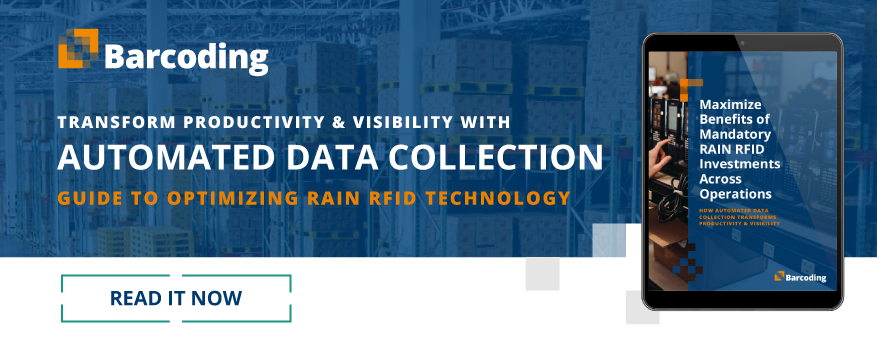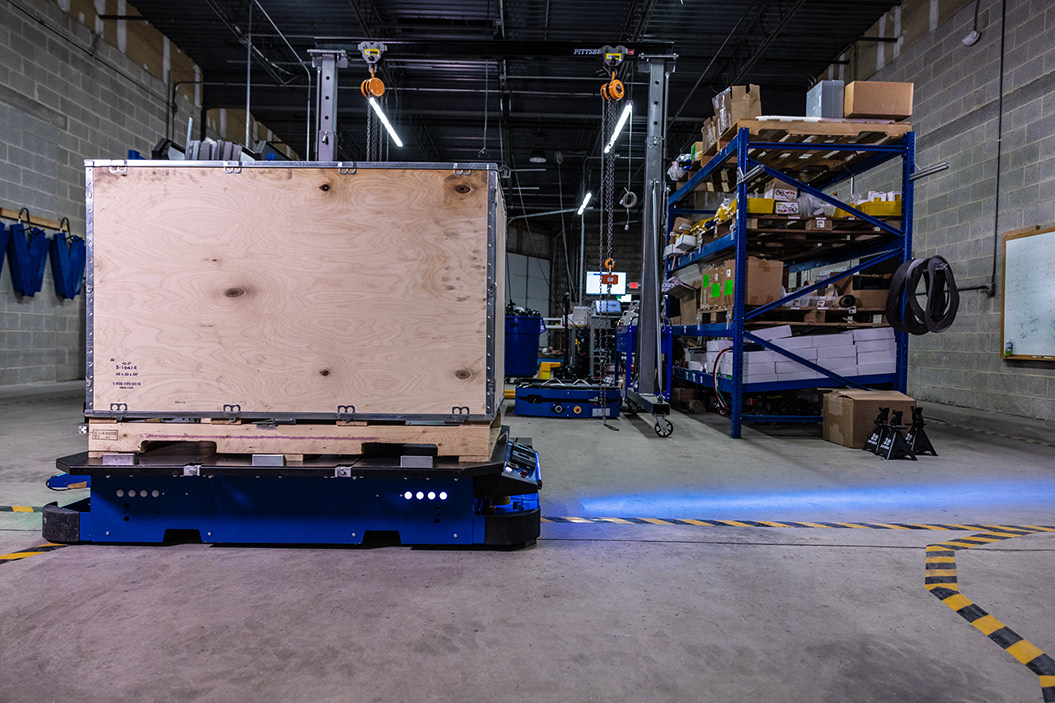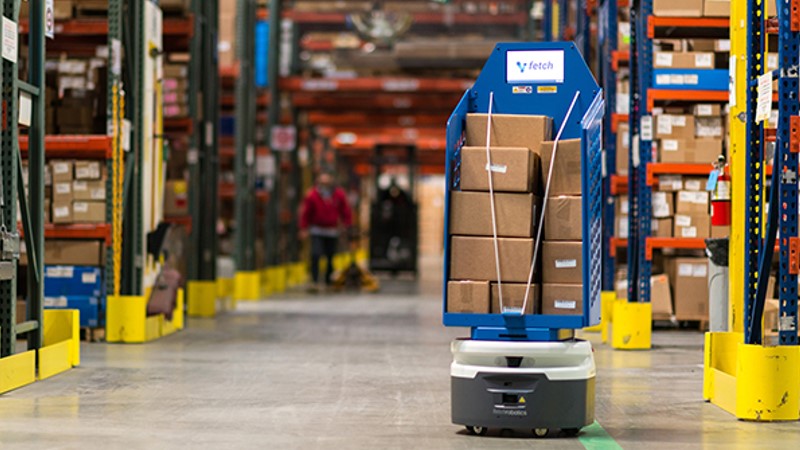Radio frequency identification (RFID) has been a rising star in data capture for decades, and it’s finally having its moment as a game-changer in warehousing, distribution, and inventory management.
Real-time inventory visibility and item-level tracking capabilities are helping users drive gains in accuracy, productivity, and customer service.
For certain applications, implementing RFID is super-simple, requiring just one label type and maybe even just one single, hand-held RFID reader.
But that’s not the case in larger and more complex environments like DCs, third-party logistics providers, and warehouse facilities. Much like implementing barcoding labels, your RFID implementation will go a lot more smoothly—and deliver better results—with proper planning.
Yet we know the benefits of RFID solutions are proven—that’s why retailers are increasingly mandating that suppliers source-tag products destined for their DCs.
So how do you ensure your investment in RFID tags, labels, and readers delivers the ROI you expect? Start by taking steps to avoid these common pitfalls:
- Improper tag and reader selection
- Getting reader settings wrong
- Missing major environmental factors
- Placing readers in the wrong spots
- Integration failures
- Leaving staff untrained
- Creating new security issues
- Ineffective label placement
- Disregarding future needs
- Underestimating software needs
1. Improper Tag and Reader Selection
Choosing RFID tags, labels, and readers suited to your specific environment and products is essential. You need to have confidence that all system components will work seamlessly. Vendor recommendations are a starting point, but your best bet is to open your doors to a trusted, experienced partner team that can properly assess your system needs, from label materials to reader types and placement.
An expert can help assess these high-impact variables that can affect readability and ranges:
- Facility layout and product storage configurations (such as stacking depths and orientation)
- Product packaging densities and materials
- Presence of metals, liquids, and other potential sources of interference
- Environmental factors like temperature and humidity extremes
Expect to test the system and validate tags on site prior to full deployment. Results may even indicate a need to adjust storage practices or tag placement strategies for best results.
Let’s say that again: Sometimes, a physical change in storage configuration may be what it takes to achieve optimal data capture from RFID. By working closely with a partner, you benefit from knowing your system’s truly optimized from all sides.
RELATED: Here’s How to Label a New Warehouse or DC
2. Getting RFID Reader Settings Wrong
Ultra-high frequency (UHF) RFID can be tuned to provide optimal read ranges, depending on your use case or environment—for example, a reader at a gate or other choke point where products move past requires different settings from an overhead reader in a storage area.
Proper label selection and positioning, and fine-tuning frequencies to control ranges, can reduce or eliminate performance problems associated with these types of material and environmental challenges.
3. Failure to Address Environmental Factors
In planning, be sure to address objects and equipment that can hinder radio signals. Metallic substances make it difficult for readers to communicate with RFID labels. Liquids can absorb radio waves, also constraining performance.
It’s even possible that wireless interference could be generated by sources like motors, other sensors, or networks. Interference can be tricky, and you don’t always know what you don’t know. Operations, IT, and your consulting partner need to work together on this one.
In facilities containing substantial metallic infrastructure, strategic label placement on available non-metallic item surfaces is advised wherever possible, and specialty RFID tags rated for mounting on metal can make a difference. Metal shipping containers or product packaging (like safes or safety lock boxes) can also present unique challenges.
Workarounds for liquid products usually center on careful tag positioning toward container tops to avoid signal absorption. RFID-impermeable packaging materials like foil-lined boxes or metallized pouches can also pose hurdles.
4. Getting Reader Placement Wrong
Plan fixed RFID reader positions carefully; improper placement can result in coverage gaps, areas where tags are unreliably scanned, or unnecessary redundancies. All those situations point to incomplete data capture, and that can lead to unreliable data. Strategically locate readers where interrogation zones can reliably capture tags on items passing through key inventory chokepoints, keeping these considerations in mind:
- Traffic patterns for personnel and products via material moving equipment like AGVs or AMRs, forklifts, and conveyors
- Facility dimensions, materials, and inventory storage locations
- Desired RFID interrogation zones and required read distances
- Anticipated tag volumes within read areas
Fine-tuning reader power outputs and other configuration settings can help optimize read performance for specific areas.
(By the way, the right expertise can actually make this preplanning a breeze on your end.)
5. Integration Failures
To maximize value, RFID data has to integrate smoothly with existing backend software platforms like warehouse management systems (WMS) and enterprise resource planning (ERP) tools. Poor integration leads to data gaps, duplication, and inaccuracies, which negate RFID’s benefits and get in the way of achieving ROI.
RFID data capture can also introduce new layers of granular item-level tracking data that some operations aren’t prepared to handle. Involve internal IT teams from the planning stages to forge clean connections and help ensure your solution captures the information you need.
Your integration partner can serve as a liaison before and during deployment to streamline the process and advise on RFID best practices.
6. Disregarding Staff Training Needs
As with any new technology, organizational change management communication is a must. After all, RFID is a means for automating certain processes; without proactive communication, training, and support, automation can be seen as a threat by some workers. You could even discover employees actively resisting or attempting to thwart a rollout.
Preemptively engage employees and show them how RFID-driven efficiency gains enhance their roles rather than replace their value. Maintain open dialogue and invite feedback as new procedures are cross-trained throughout your facility. Manage expectations around optimal integration timeframes and learning curves. With cooperation, your organizational culture can thrive amid transition.
7. Creating New Security Risks
RFID tags don’t usually hold sensitive information such as company financial data, sales histories, or product formulations. Tag data can also be encrypted, and tags can be locked down after encoding to make it harder for unauthorized third parties to access the information you choose to store on tags. But realistically, the RFID tag and label data doesn’t add significant risk.
Still, it’s important to remember that RFID data corresponds to enterprise data—and your company’s database deserves ample protection against threats. This points to one more reason to make sure your RFID implementation team includes operations and IT from the get-go.
8. Subpar Placement of RFID Labels
Seemingly small RFID label placement errors can profoundly impact performance. Products can end up inconsistently registering as they move through chokepoints. Inventory counts can develop and compound inaccuracies. Items get lost inside your facilities if they become electronically invisible.
During preliminary testing, be sure to validate RFID label efficacy by intentionally varying tag locations and product orientations. High-density packages may need facings on multiple sides for visibility at all angles. Place liquid container tags strategically toward the top to avoid issues with radio wave absorption. Let experimentation in your testing phase drive label placement decisions.
9. Forgetting to Future-Proof
Be sure to take a long view and consider future infrastructure expansion when selecting solutions. Ask your solutions partner:
- Can the systems gracefully scale up as operational demands grow?
- Can upgrades be made taking a modular approach?
- What’s the cost trajectory of scaling versus replacing equipment?
Seeking the absolute lowest initial deployment cost can compromise your lifecycle planning. Be sure to choose solutions strategically positioned for growth and flexibility from the outset, and don’t be afraid to ask for advice and recommendations.
10. Struggling with Software
After investing in tags, labels, readers, and supporting technologies, using subpar software can defeat data visibility. Bare-bones inventory tracking software can’t always deliver meaningful real-time analytics and easy-to-understand reporting dashboards.
On the other hand, a platform that readily integrates with RFID infrastructure and your WMS and/or ERP systems can put the power of granular, real-time inventory visibility to work for you and your users, and deliver mobile accessibility and the modern interfaces that make it easy for users to embrace your RFID implementation.
You Can Make RFID Implementation Easier
With seasoned guidance optimizing your RFID deployment, your facility can really capitalize on the improved inventory visibility and the data-driven insights that can improve your operations. The benefits of RFID and automated data collection can be yours whether or not you’re implementing to meet a mandate.
Take a deep dive into the advantages your RFID implementation can bring by downloading our guide.






